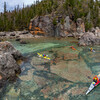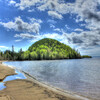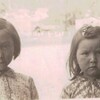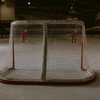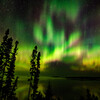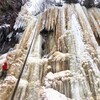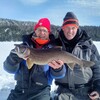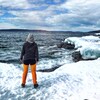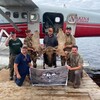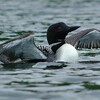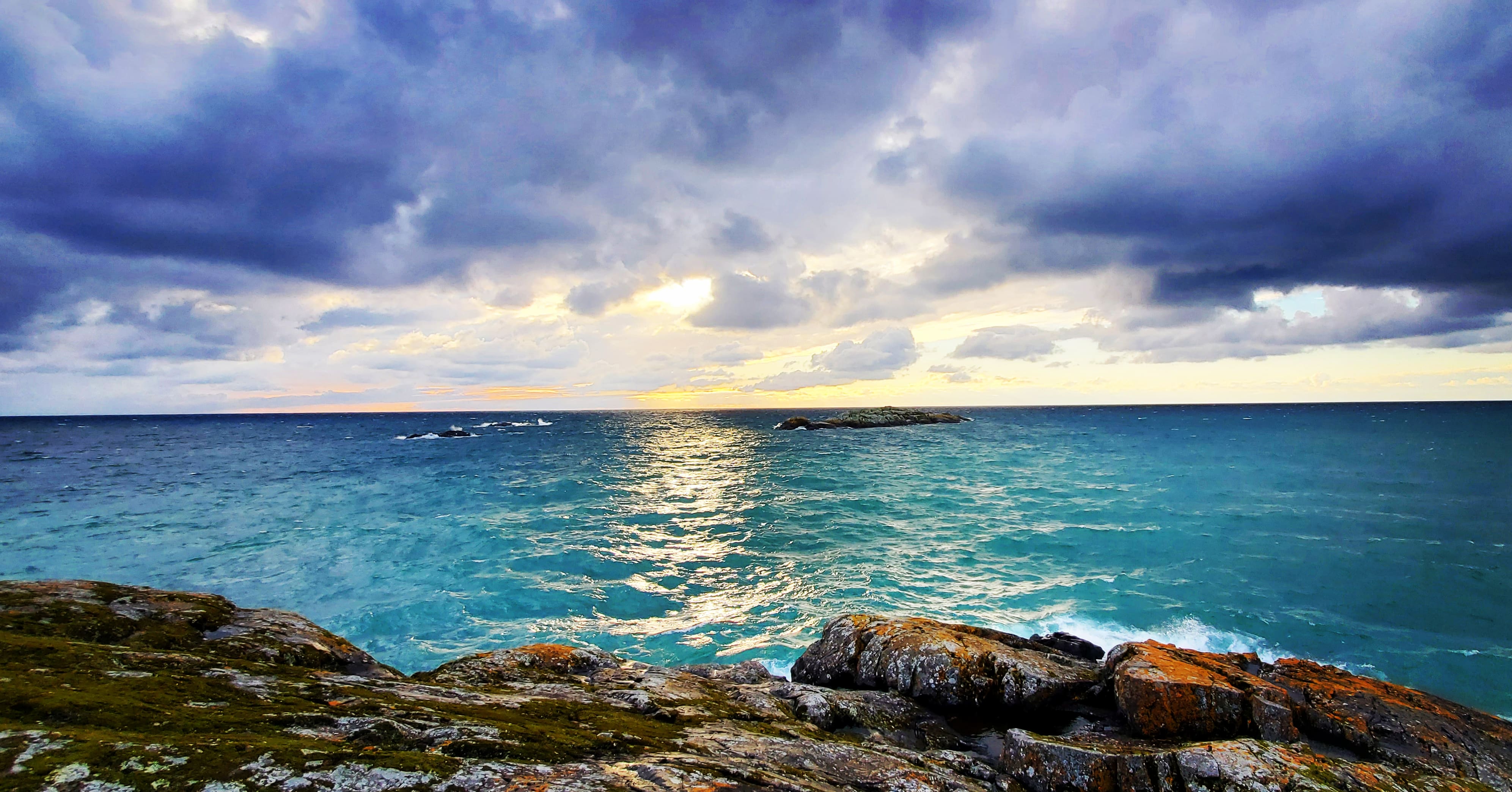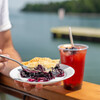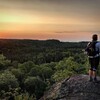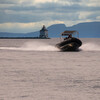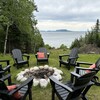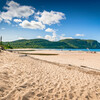
Art Through the Ages
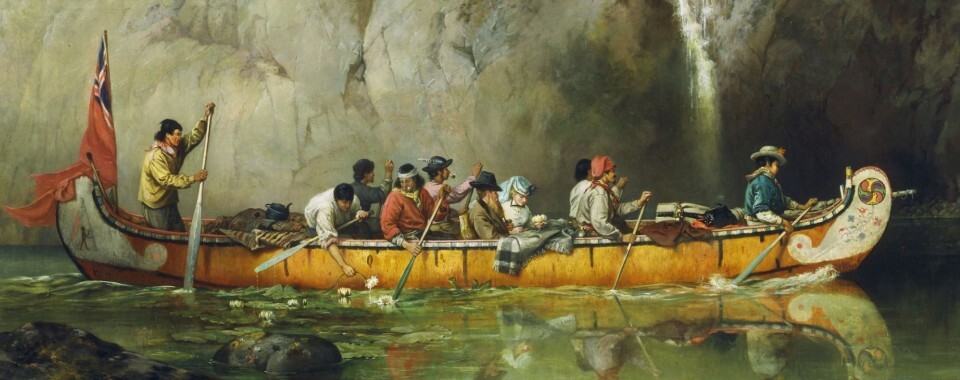
Throughout human history art has been a form of communication, historical record, personal expression, and healing. The North Shore of Lake Superior and Ontario’s Superior Country is no stranger to its connection to art—serving both as a place of inspiration and as a platform for expression in its many forms.
Art itself is a very broad term and can include various mediums. The term fine art often refers to painting, drawing, and sculpture, but it can also include photography, music, and theatre. Art is not limited to only decorative items, or to the forms of expression as mentioned above but can also include practical items used in everyday life such as rugs, belts, baskets, tools and pottery to name a few.
All of that, and more, can be found along the North Shores of Lake Superior.

Indigenous Pictographs
Some of the earliest examples of art along the North Shore that can still be seen today take the form of an ancient communication among Indigenous peoples. These pictographs were used to indicate plentiful fishing or harvesting areas, waterfalls or rapids ahead, a safe passage, a sacred place, or to honour Spirits and ancestors, among others.
Though there are many sites throughout Northwestern Ontario there are two main sites along the North Shores of Lake Superior that are relatively accessible. These sites are near Nipigon/Red Rock and Schreiber/Terrace Bay. The Nipigon Bay site situated almost directly across the bay from Red Rock is the second largest pictograph site on Lake Superior. This site is only accessible by boat, however visiting the Red Rock Interpretation Centre you can see pictures and learn a little about the pictographs. This site is believed to be at least 2,000 years old.
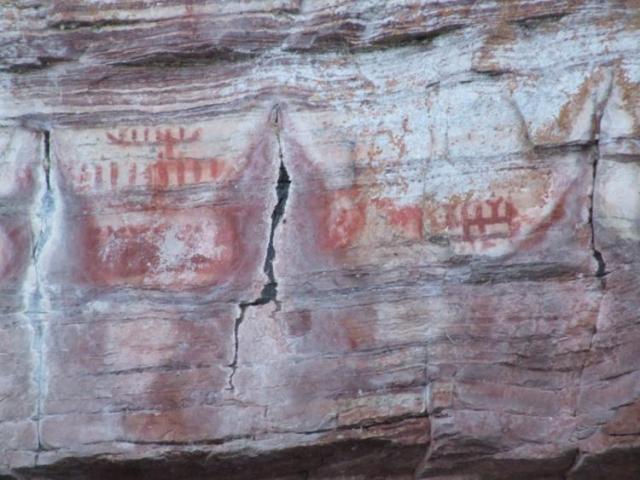
The other site is at Worthington Bay between Schreiber and Terrace Bay, right on the shores of Lake Superior. The Casque Isles Hiking Tail is one way to access this site and enjoy the incredible scenery and nature the North Shore has to offer along the way. The Worthington Bay Road itself has been susceptible to washouts and can be rough at times depending on the time of year and may not always be suitable for vehicle traffic for the entire length of the road. These pictographs are located to the right where the trail down to the beach from the parking area meets the shore.
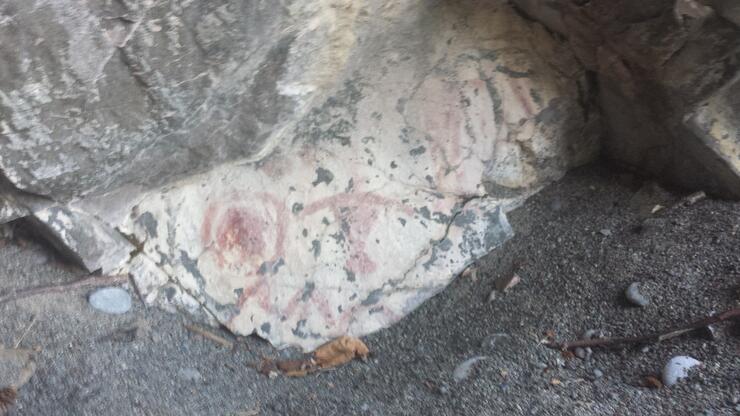
To see a larger inventory of pictograph sites Thor Conway’s Discovering Rock Art: A Personal Journey With Tribal Elders, 2016 and Swleyn Dewdney’s Indian Rock Paintings of the Great Lakes, Second Edition, 1967 are worth exploring. As most of these areas are only accessible by canoe or kayak, it is a fabulous opportunity to reconnect with nature and explore the vastness of Northwestern Ontario while travelling in the footsteps and paddle strokes of those who have gone before.
Clothing, Accessories and Home Goods
Embroidery, beadwork and quillwork are another part of Indigenous culture and heritage representing the connection between Mother Earth and humans through the respectful and sustainable harvesting of resources that can be used both in a practical and aesthetic way. Many of the patterns used by Indigenous peoples have incorporated local flora and fauna while using the natural resources on hand including animal hides and furs, stone or clay, and flowers and plants. Whether it be through the creation of items for ceremony, as a tool for teaching and passing on the stories and traditions of the past, to adorn mitts and moccasins and other pieces of clothing, jewelry, or keepsake baskets, these are only a few examples of how some forms of art can serve as both personal and cultural expression and how inspiration from nature can transcend time as part of a culture’s heritage. As an area rich in Indigenous history, the North Shore of Lake Superior is home to several places where visitors can view and purchase some of these items. Both the Thunder Bay Museum and the Thunder Bay Art Gallery Permanent Collection are great places to discover the history and see examples of these incredible and skillful works of art. Heading east along the North Shore, Pelletier’s Gas Bar and Native Art Gallery is a great place to purchase some local and regional artwork that you can take home with you.
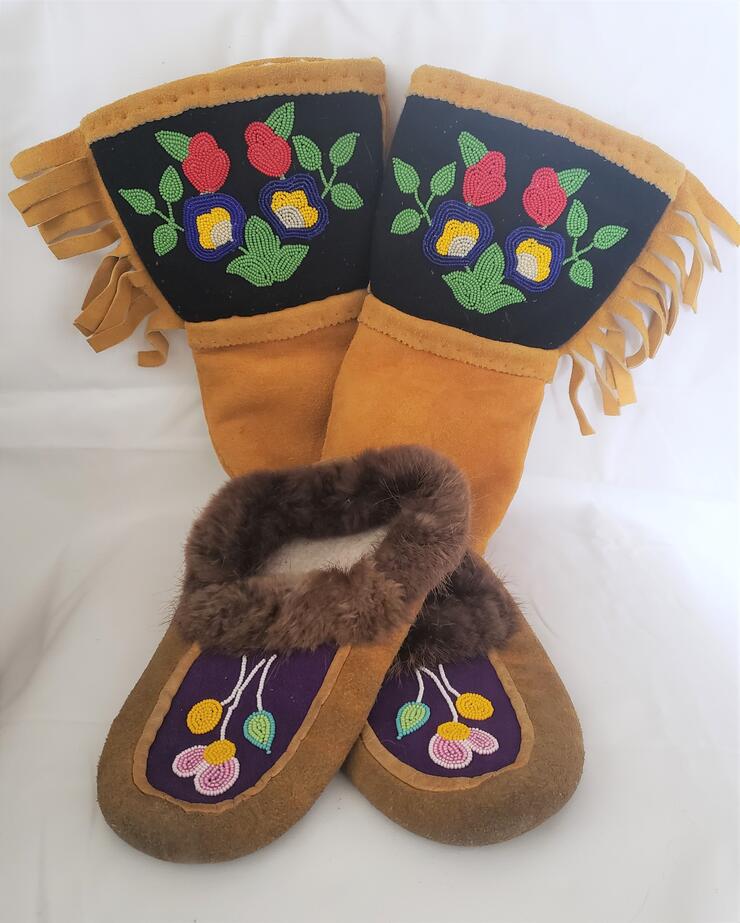
Painting and Sketching
Before early photography really took off in the mid 1800s, with daguerreotype photography embraced by European society in the 1860s, art, and painting and sketching was the primary way of visually documenting a record of events, lifestyles, and scenery. Between 1858 and 1870 Frances Anne Hopkins travelled with her husband who was an inspector for the Hudson’s Bay Company. They visited various fur-trading posts and had visited Fort William, now Thunder Bay, on more than one occasion. Hopkins made detailed sketches throughout her voyages which she then used to produce very realistic paintings back in her studio. Her paintings are meticulous in detail serving both a documentary and aesthetic function by showcasing voyageur life depicting the clothing, tools, cookware, and birchbark canoes that served both as a means of transportation and shelter. It is sketches and paintings such as those done by Frances Anne Hopkins that help to provide historical records in great detail of the colours of clothing that were worn, materials used, what shorelines and water levels looked like at a certain point in time, the number of paddlers in a canoe and their various positions and roles, the layouts of buildings, different plant species in a certain area, etc.

Visiting Fort William Historical Park, the clothing, baskets, tools, and cookware bear a strong resemblance to those depicted in her paintings and the works of other artists from that time. A living history museum is a fun and exciting way to see firsthand how documentation through art (painting and sketches) can be transformed through another form (acting) to bring the past to life.
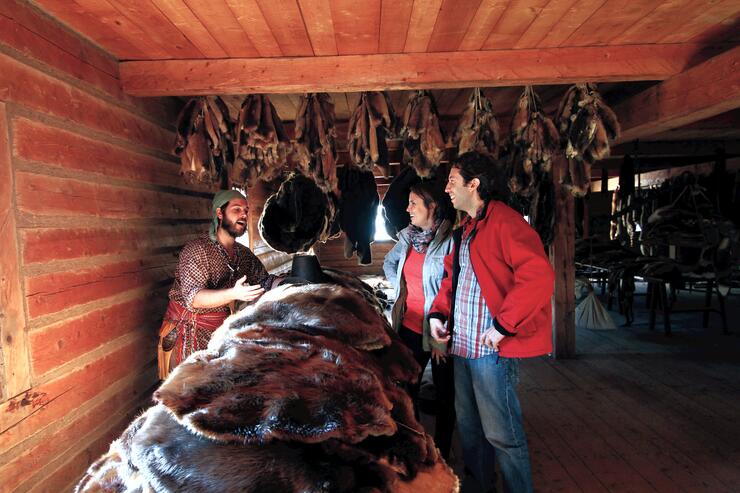
The Group of Seven
Some of the most well-known Canadian artists, The Group of Seven, found solace and healing on the shores of Lake Superior. For them art and painting were a form of therapy, relaxation, personal growth, and healing after World War I as well as an opportunity to use traditional mediums in an expressive modern way. The early members of the Group of Seven arrived in the Algoma region and the North Shore in 1919, making several return trips late into the 1960’s. Lawren S. Harris and A. Y. Jackson had both been hit hard by the war with Harris losing his younger brother and Jackson commissioned as a war artist through the Canadian War Memorials Fund. The two of them set out on their first trip to the Algoma region in 1919, making it to Rossport in 1921. Many of the other members also found comfort and inspiration on the shores of Lake Superior, including Frank Johnston, Arthur Lismer, A.J. Casson and Franklin Carmichael. The impact of their time “up north” can be seen in the Moments of Algoma Interpretive Panels and using the Moments of Algoma App. Along the North Shore, these panels can be found at the Nipigon’s Bridgeview Lookout, Wardrope Park in Rossport, Terrace Bay Lighthouse, Marathon District Museum and Historical Society, the Neys Provincial Park Visitor Centre and Pic Island Overlook and Pukaskwa National Park.
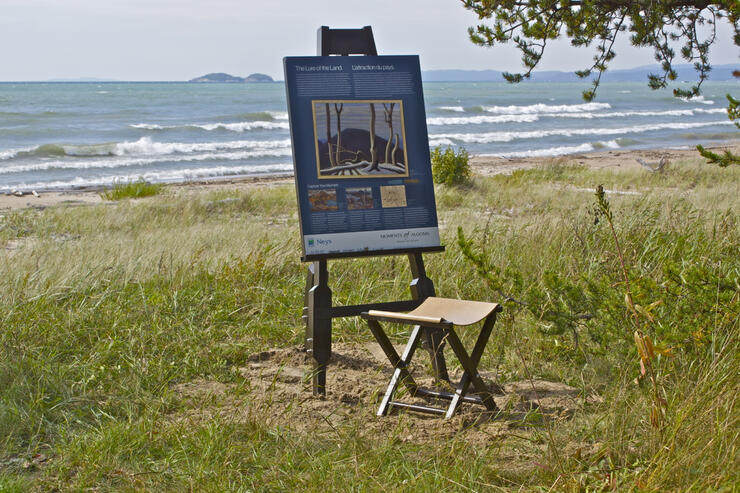
The North Shore Offers Visitors a Rich History of Art
With a rich cultural history and drawing inspiration from other artists across time and geography, the art of the North Shore is diverse in medium and style yet consistently shows a connection to nature and the Big Lake. Motifs from Indigenous art and techniques resembling the Group of Seven and many other artists can be seen in the works of several artists from this region, all in an attempt to make tangible the emotions felt being surrounded by nature and evoke those same emotions for another when gazing upon and interacting with their creations. In each of the communities on the shores of Lake Superior you will find artists working in a variety of mediums and featured in local art galleries, museums, and shops. From metal work, pottery, woodwork, and stone, to painting, photography, and drawing, to beadwork, clothing, and jewelry, the North Shore of Lake Superior has drawn artists to connect with their surroundings and find inspiration everywhere. Artists who have grown up here and have stayed, those who have gone and returned, or those who have visited, felt the call of the lake and stayed, have all found a form of inspiration, healing, and personal expression in the rugged and peaceful landscapes that surround us.
Explore the North Shore, discover what inspires you, and maybe take a piece of artwork with you.
Places to see and experience art in Superior Country. Plan your visit today!
Old Fort William Historical Park
Pelletier’s Gas Bar and Native Art Gallery
Fertengiger’s Gas and Variety – Pays Plat
Painter By the Lake, Beverly Turpin – Rossport
Island Pottery, Timothy Alexander – Rossport
Recommended Articles

10 Reasons to *NOT* Travel the Lake Superior Circle Tour
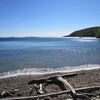
Canoeing the the Slate Islands near Terrace Bay
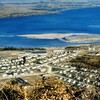
6 Amazing Facts About Red Rock, Ontario
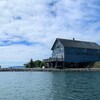
11 Things to Do in Silver Islet, Ontario
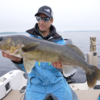
Incredible Fishing at Dog Lake Resort

Best Roadside Picnic Spots in Northern Ontario
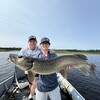
A Father and Son Tradition at Miminiska Lake Lodge
Hikes, Bites and Sights on the North Shore of Lake Superior
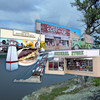
A Day Tripper's Guide to Nipigon

A Historic Lodge in Red Rock, Ontario
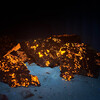
Hunting for Yooperlites Along Lake Superior
